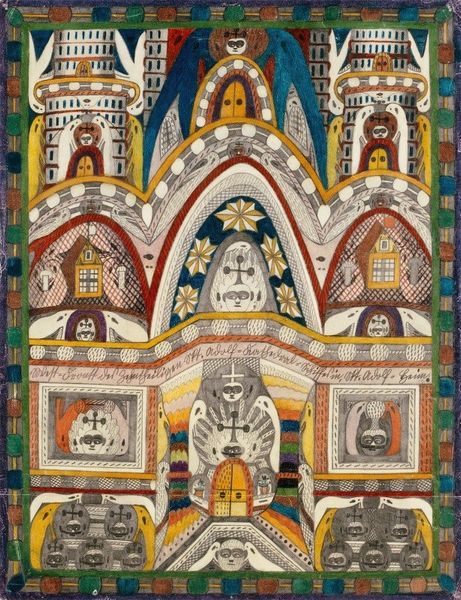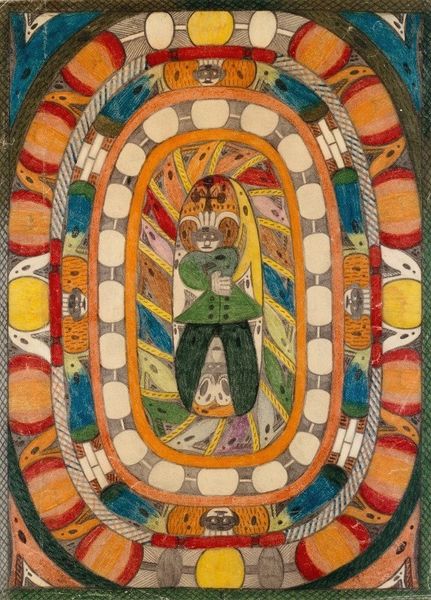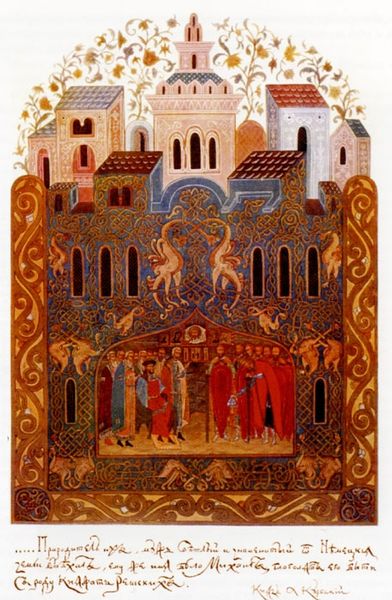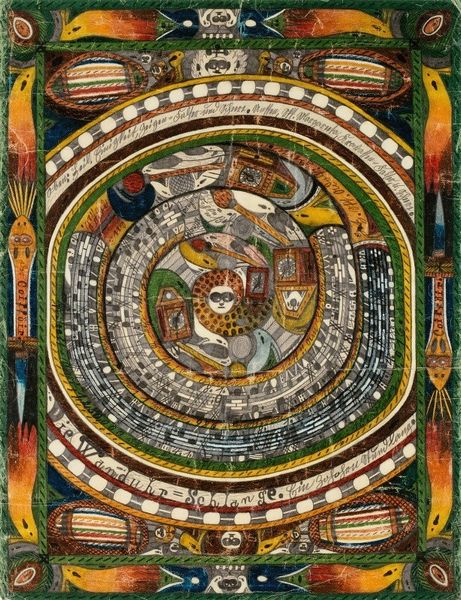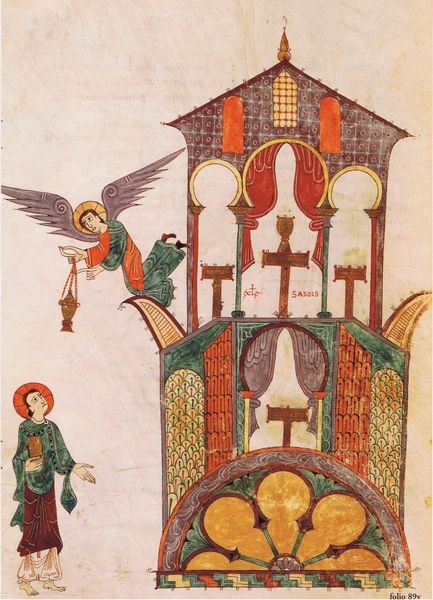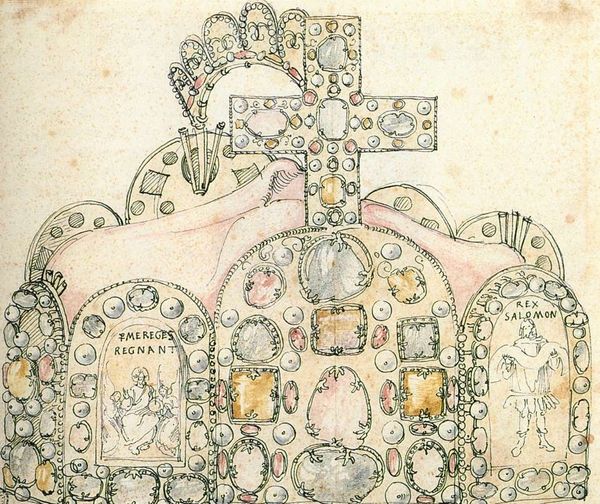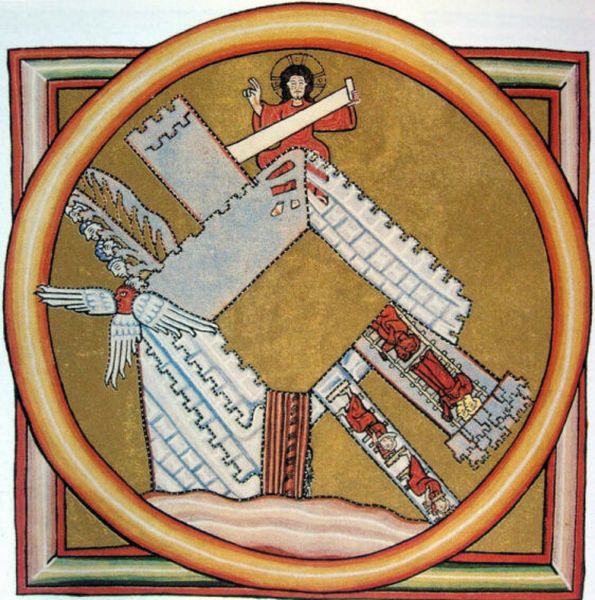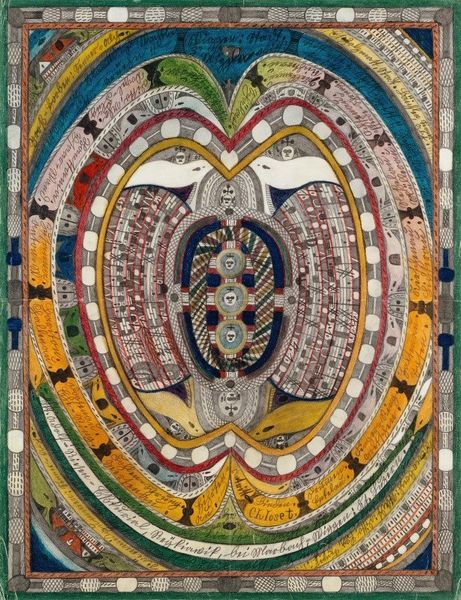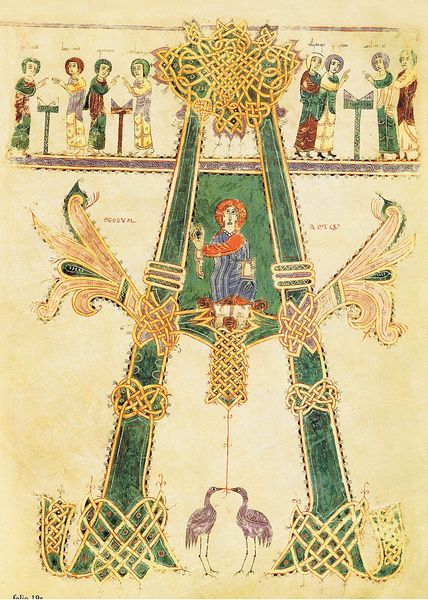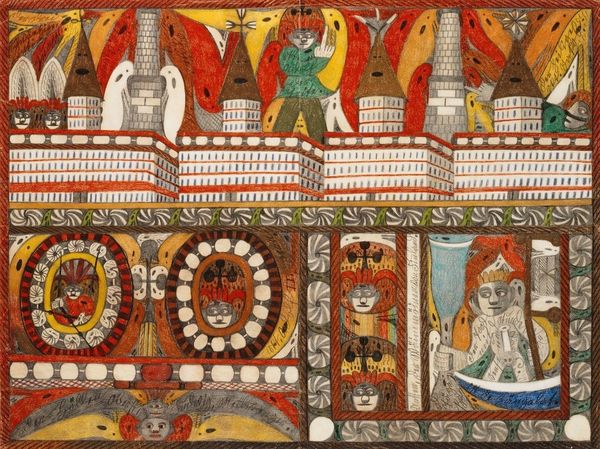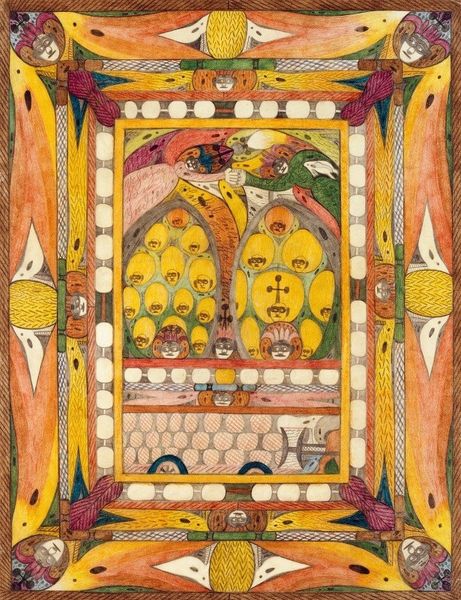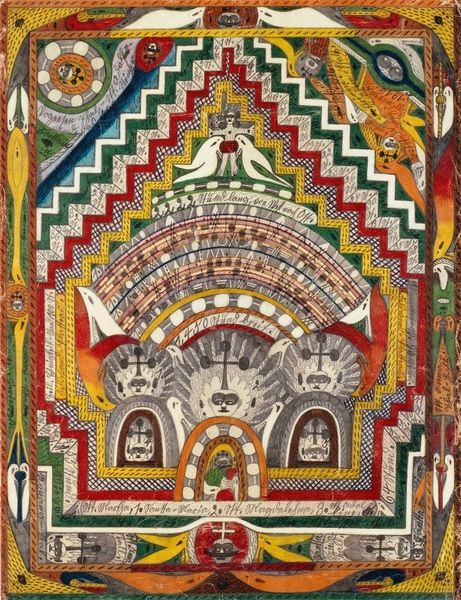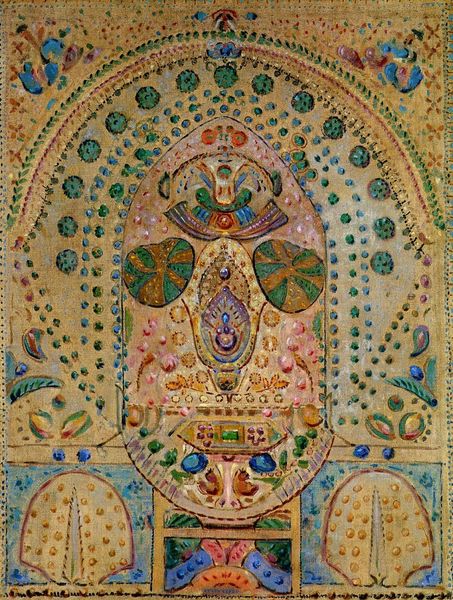
drawing, paper, watercolor
#
drawing
#
stain glass
#
outsider-art
#
fantasy-art
#
paper
#
watercolor
#
folk-art
#
stained glass
#
watercolor
Copyright: Public Domain: Artvee
Curator: Take a look at Adolf Wölfli's "Leantika,=Riesen=Grand=Hottell, in Lion=See; Indien," created in 1922. It's a work on paper combining watercolor and drawing techniques. Editor: Wow, it’s immediately striking! The intense symmetry, the almost obsessive detail—it has the feel of a Byzantine icon reimagined as architectural fantasy. What are we looking at materially here? Curator: Wölfli, an outsider artist, employed simple means—colored pencils, graphite, and watercolor on paper. Given his background, these would've been easily accessible, inexpensive materials within the psychiatric hospital where he spent much of his life. Editor: It definitely speaks to themes of confinement and escapism. The elaborate, almost hallucinatory details—the creatures, the repeated faces, that clock face at the very top of the hotel–they give it this incredible otherworldly quality. How might this vision connect to his personal narrative? Curator: That's critical to consider. Wölfli was institutionalized for much of his adult life, and his art became a form of self-therapy and world-building. His mental state, and that reality, fueled his need to construct these intricate worlds, and doing so required particular skills of making as he translated the architecture of Europe that he witnessed in books, into his unique form. Editor: I see so much yearning in it–for stability, for travel, for recognition. It’s fascinating how this imaginary hotel in Lion=See becomes this powerful symbol of both refuge and imprisonment. This blending and the way in which the drawing on paper mimics the architecture of, perhaps, an ancient and sacred city is not to be missed. The social dimension of mental health institutions also calls for a dialogue in the art itself, where this piece of art allows for many diverse opinions of it. Curator: The systematic approach—the way he painstakingly builds layer upon layer of color and form—it speaks volumes about his need for control and order within a world that must have felt incredibly chaotic. The labor in his drawings gives the viewers so much to enjoy. Editor: Absolutely. By understanding his processes and tools, we understand his lived reality, as you indicate. It helps deconstruct the romanticized image of the solitary, suffering artist and positions Wölfli's creation within the broader context of mental health, institutionalization, and resistance. Curator: Agreed, understanding these material constraints is pivotal in examining the value, production, and reception of his art, isn't it? It's amazing how his art becomes a testament to both restriction and resilience. Editor: It gives you a sense of profound depth. This experience of studying Wölfli's Grand Hotel certainly opened my mind to different perspectives of art creation in the modern day.
Comments
No comments
Be the first to comment and join the conversation on the ultimate creative platform.
